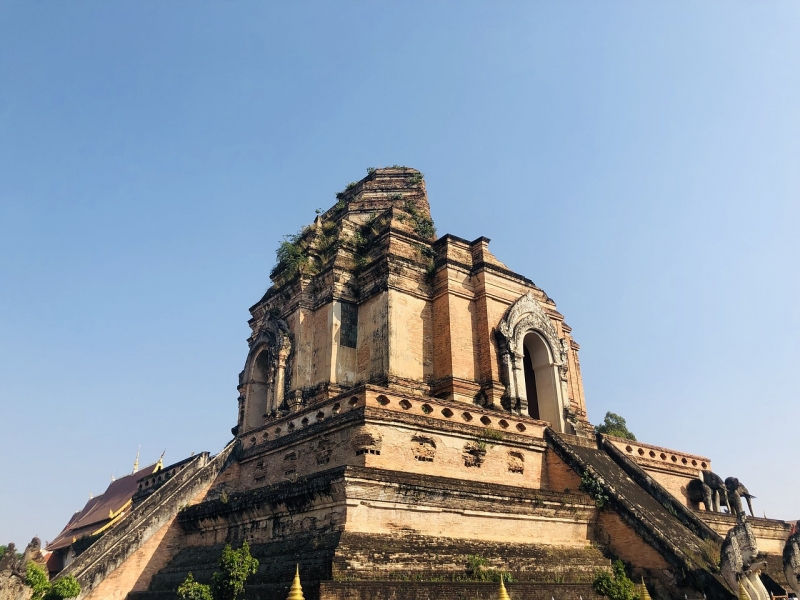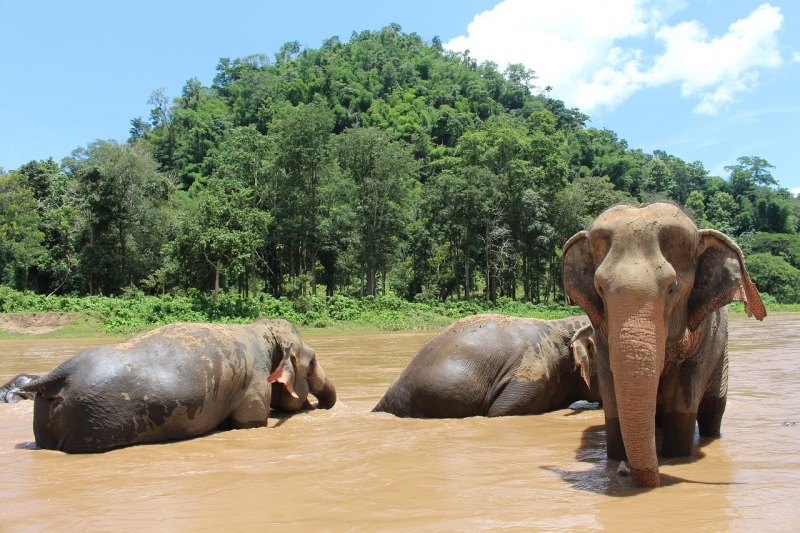No trip to Thailand would be complete without a visit to Bangkok and Chiang Mai. These are two cities, in some way worlds apart, yet sharing a mystique all of their own. Bangkok is a raucous yet mysterious metropolis, pulsating with all that urban street life offers.
Neon-lit hidden alleyways allude to possibilities that might well be considered illegal in other countries. Yet Thailand turns a blind eye to many hedonistic tourist activities to bring in those foreign dollars.
Chiang Mai, the quieter sibling of the two places, is cradled by ancient walls. Buddhist monks whisper conversations in quiet cafes, while street-corner bars can offer tourists a tranquil escape from the hustle and bustle of the markets and the business district.
So, what are the best ways to get to Chiang Mai? Obviously, that depends on whether you want to fly directly into Chiang Mai Airport (CNX) from another country or take a trip first via Bangkok. Assuming that you fancy a blowout in Bangkok beforehand, then the options for onward travel to Chiang Mai are flight, train, or bus.
If you want to see more of the Thai countryside than the view from an aircraft window, then a daytime train will cost up to $20 (S$27) equivalent in Thai Baht, the local currency. If you’d rather get some shut-eye after an exhausting few days in Bangkok, you could take a night train with a bunk. In either case, the train journey takes about 13 hours.
If you are interested in hopping on a bus, then the journey is slightly quicker (due to fewer stops) and takes about 9 hours at roughly the same cost as the train.
What to do in Chiang Mai

Image credit: juliangillian | Pixabay
Chiang Mai’s streets wind through a cityscape seemingly untouched by the passage of time. Lanna religious culture weaves its spell here, lending a sense of history and tradition to the many temples like Wat Phra Singh and Wat Chedi Luang.
Monks wander the streets in their saffron robes, serving as a living reminder of Chiang Mai’s deep-rooted connection to Buddhism.
A visit to the Sunday Walking Street Market is a must, where the air is thick with the scent of incense and the sound of live music fills the narrow streets and alleyways. As the sun sets on Sunday evenings, the market comes alive with vibrant colours and traditional music. Stretching along Ratchadamnoen Road, visitors can choose from an impressive array of handicrafts, souvenirs, and street food. Amidst those stalls and the street food vendors, you can lose yourself in the romance of the local ancient culture. Let’s take a quick look at the other “must-sees” of Chiang Mai:
Wat Phra That Doi Suthep
This iconic temple, perched on a mountaintop overlooking Chiang Mai, offers stunning panoramic views of the city and a glimpse into Thailand’s spiritual heritage. The legend states that the site was chosen by a sacred white elephant, and the temple itself contains relics of the Buddha.
Elephant Nature Park
Many people avoid elephant rides since the practice garnered itself a reputation involving abuse of the animals themselves. However, the elephant tourism industry has wrapped its trunk around the problem and nowadays only ethically run sanctuaries are allowed. At the Elephant Nature Park, the staff and management provide a safe haven for rescued elephants.
Visitors are welcome to observe and interact with the gentle giants in their natural habitat without riding or exploitation. But be sure to check opening hours and days, some locations are not always open depending on seasonal fluctuations.

Image credit: pandapotter | Pixabay
Chiang Mai’s Old City
Encircled by crumbling walls and a tranquil moat, Chiang Mai’s Old City is a treasure trove of history and culture. Wander its narrow streets lined with traditional teakwood houses, visit ancient temples like Wat Chedi Luang and Wat Phra Singh, and immerse yourself in the city’s rich past.
Doi Inthanon National Park
Those people wishing to escape the hustle and bustle of the city can enjoy the lush flora and fauna of Doi Inthanon National Park, home to Thailand’s highest peak. The Doi Inthanon mountain itself is situated 2,565 metres above sea level, where a Thai Royal Air Force weather station is located.
Nearby, the Thai National Observatory is renowned as one of the most advanced optical astronomy facilities in Asia. Local markets and rice field terraces make great opportunities for photographers.
You can easily spend two or three days in the area, hiking through lush thick rainforests or visiting stunning waterfalls such as Wachirathan and Siriphum. Of course, a visit wouldn’t be complete without seeing the Royal Twin Pagodas, which offer panoramic views of the surrounding landscape.
In summary, the great thing about a trip to Thailand, whether you visit Chiang Mai, Bangkok or both, is the affordability. Local travel, food and drink are much cheaper than their European equivalents, or even other Asian destinations like Japan. If you haven’t visited Thailand before, you’re in for a rare treat. Don’t delay, book a trip today!





